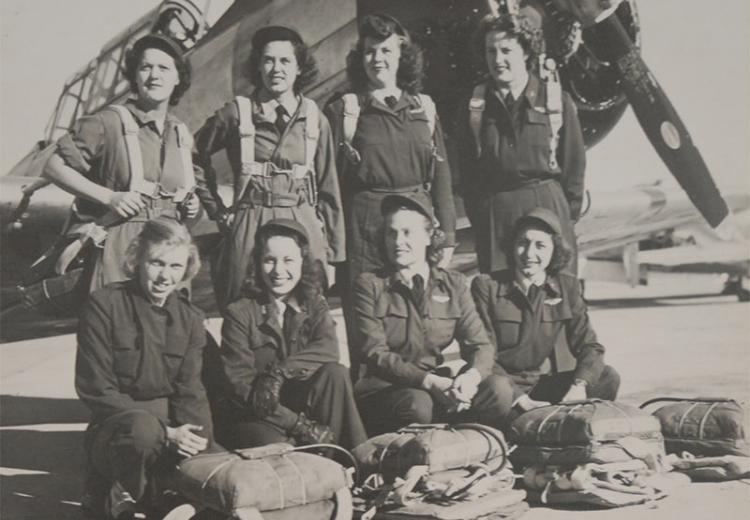Women Aviators in WWII

World War II Women Air Force Service Pilots aviators.
“Fly Girls”: Women Aviators in World War II
Activity 1 | Activity 2 | Activity 3
Activity 1: Women's Roles in World War II
The U.S. government issued posters during World War II to recruit women for wartime work. Review some examples of World War II posters:
- The More Women at Work, the Sooner We Win
- “I've Found the Job Where I Fit Best”: Find Your War Job in Industry, Agriculture, Business
- Save His Life . . . and Find Your Own: Be a Nurse
- "Victory Waits On Your Fingers: Keep 'Em Flying, Miss U.S.A. ”
- Women in Red Cross
- Longing Won't Bring Him Back Sooner . . . Get a War Job!
- We Can Do It!
As you look at each poster, answer these questions:
- What is the woman in the poster doing? What type of job is she demonstrating?
- What skills might she need to perform this job?
- Would she have done this job before the war? After the war?
- What does the woman look like in the poster? Does her dress or behavior remind you of anyone? (A celebrity from that time, for example)
- What does the poster seem to be saying about acceptable roles for women in wartime? How did women’s roles differ in peacetime?
- What symbols does the poster use to get its point(s) across?
- How might the government have used this poster to persuade women to join the war effort?
(Note: You may download a printable PDF worksheet with these questions.)
Activity 2: Women Airforce Service Pilots (WASPs)
During World War II, 350,00 women served in the U.S. military. Women Airforce Service Pilots (WASPs) flew fighter planes from factories to Air Force bases around the world. They towed targets and tested new aircraft for the U.S. Army Air Force.
Learn more about the WASPs on these Websites:
- National Archives, Women Who Served: The Women’s Auxiliary Ferrying Squadron
- PBS's Fly Girls Documentary
- Remember what you read? Take the WASP History Quiz
(Note: You may download a printable PDF worksheet with these links.)
Activity 3: What Was It Like to Be a WASP?
“Fly girls,” as women aviators were called, flew fighter planes at a time when few women held driver’s licenses or traveled on their own. During World War II, the media made it seem like flying planes was an exciting and glamorous job for women.
What was it really like to be a WASP?
Find out by reading these personal recollections of the WASPs:
Compare and contrast these personal recollections with how women were portrayed in World War II posters (and newsreels, if you viewed them).
Select a WASP from the What Was It Like to Be a WASP? worksheet and write a brief essay about her experiences during the war.
